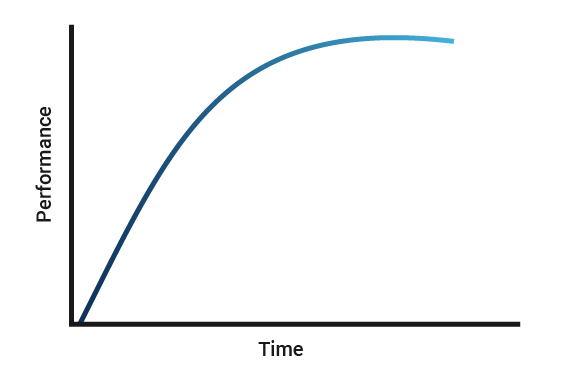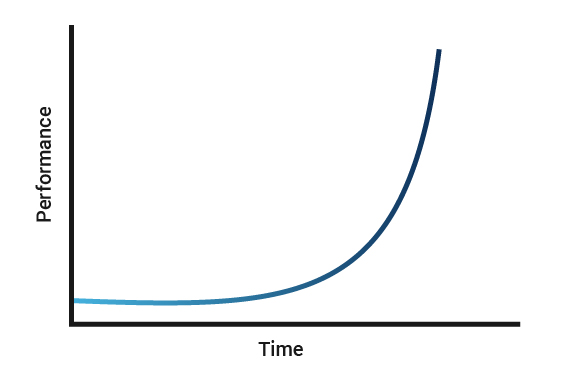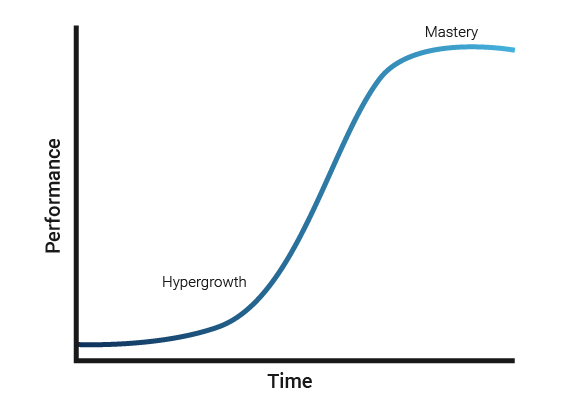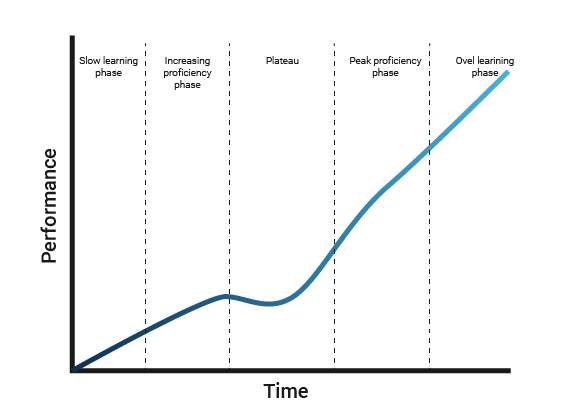

PhD Holder and result-oriented Director with 25 years experience with involvement in all levels of Business Strategy, Sales and Marketing, Managing Project and Product Development. Aside of managing a company, he is also the best corporate trainer and public speaker in seminar and conference.
Learning Curve in Project Management
For seasoned project managers, navigating the complexities of project execution is second nature. We meticulously plan, allocate resources, and strive for smooth execution, yet there's an undeniable factor often overlooked: the learning curve. It's the invisible but potent force that shapes performance, impacting everything from resource allocation to risk management. Understanding and harnessing this learning curve is crucial for maximizing project success.
What is the Learning Curve?
As highlighted by the Project Management Institute (PMI), the learning curve concept embodies the saying "practice makes perfect." Imagine a team tackling a new task, say, implementing a complex software system. Initially, progress might be slow, with each step requiring deliberate effort and consuming more time. But as they gain experience, their movements become smoother, quicker, and less effortful. This gradual improvement in speed and efficiency over repeated attempts defines the learning curve.
Why Is Learning Curve Important for Project Managers?
Ignoring the learning curve can lead to underestimating time needs and resource requirements. Embracing the learning curve empowers you to:
Realistic Estimates
Ignoring the learning curve can lead to underestimating time and resource requirements. By factoring in the initial dip in efficiency, you can set more realistic timelines and budgets, avoiding missed deadlines and cost overruns.Resource Allocation:
As the team progresses up the curve, their capacity increases. This allows for strategic resource allocation, reassigning individuals to more complex tasks or freeing them up for other projects.Risk Management:
Initial stumbles are expected on the learning curve. By anticipating these challenges, you can proactively identify and mitigate potential risks associated with new skills or processes.Team Motivation:
Recognizing the learning curve explicitly boosts motivation within the team. They'll see initial slowdowns as a natural part of the process, reducing frustration and boosting morale as they climb the curve towards mastery.
Different Shapes of the Learning Curve
The learning curve isn't always a smooth, linear ascent. Depending on the complexity of the task, team composition, and individual learning styles, it can manifest in different shapes:
-
Diminishing Returns

This curve shows a rapid increase in the rate of progression at the beginning of learning, followed by a decrease over time. This is often seen in tasks that are easier to learn.
-
Increasing Returns

This curve shows a slow increase in the rate of progression at the beginning, followed by a sharp increase as proficiency is achieved. This is often seen in tasks that are more complex to learn.
-
S-curve

This is the most common type of learning curve, and it shows an initial slow increase, followed by a faster increase, and then a leveling off. This curve is often seen in tasks that require some practice to master.
-
Complex Curve

This curve is similar to the S-curve, but it has more plateaus and peaks, which represent periods of slow learning followed by periods of faster learning. This curve is often seen in tasks that are very complex and require a lot of practice to master.
Optimizing Your Climb!
While the learning curve is inherent, there are ways to optimize its trajectory:
-
Targeted Training:
Providing focused training on Project Management and its related skills equips the team, especially project managers, with the necessary knowledge and skills, accelerating their progress up the curve. -
Mentorship and Knowledge Sharing:
Pairing experienced team members with newcomers fosters knowledge transfer and shortens the learning journey. -
Cross-training:
Expanding individual skillsets allows for flexible resource allocation and adaptability to unforeseen challenges. -
Performance Tracking:
Monitoring progress and individual learning styles helps identify areas requiring additional support and adjust training or resource allocation accordingly. -
Celebrating Milestones:
Recognizing and celebrating achievements along the curve boosts team morale and reinforces positive learning experiences.
To Sum Up…
The learning curve is a valuable tool, not a barrier. By acknowledging its presence, understanding its shapes, and actively optimizing its climb, project managers can navigate the path to efficiency with greater confidence, leading their teams to achieve project goals and secure success.
Reference:
Broderick, D. (2020, November 19). Embracing the learning curve: Why starting
projects now can benefit your skill development. LinkedIn. https://www.linkedin.com/pulse/embracing-learning-curve-why-starting-projects-now-skill-smulovics-8oisc/?trk=article-ssr-frontend-pulse_more-articles_related-content-card
Gupta, D. (2022, July 29). The learning curve theory: Types, benefits,
limitations. Whatfix.com. https://whatfix.com/blog/learning-curve/
Investopedia. (2023, October 26). What is a learning curve? Formula, calculation, and
example. Investopedia.com.https://www.investopedia.com/terms/l/learning-curve.asp
Project Management Institute. (2021, June 17). Using the learning curve to design
effective training. PMI.org. https://www.pmi.org/learning/library/using-learning-curve-design-effective-training-4746